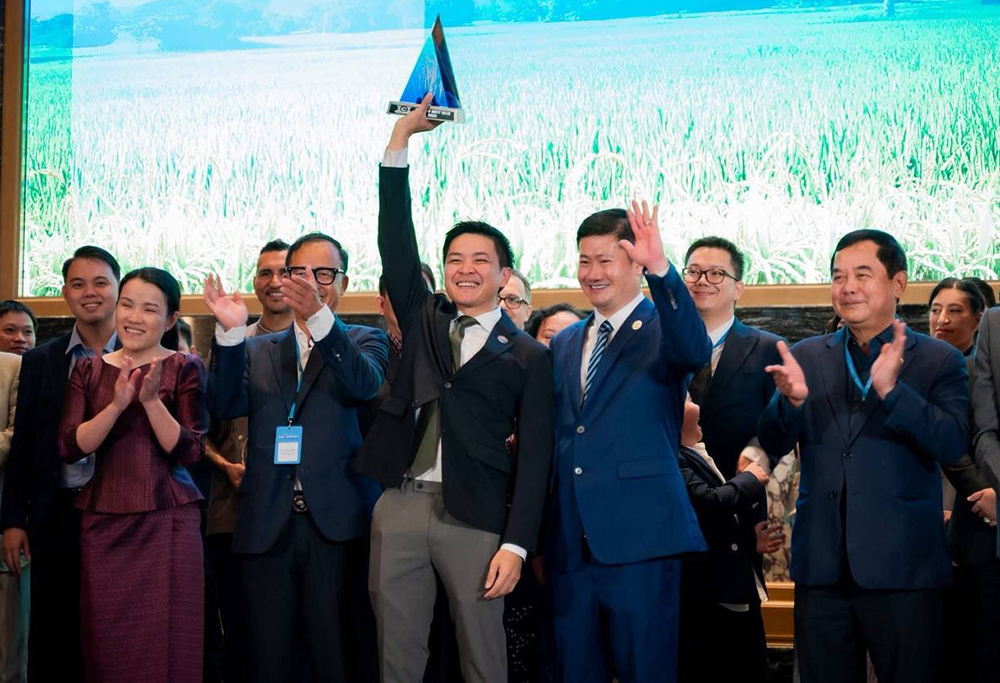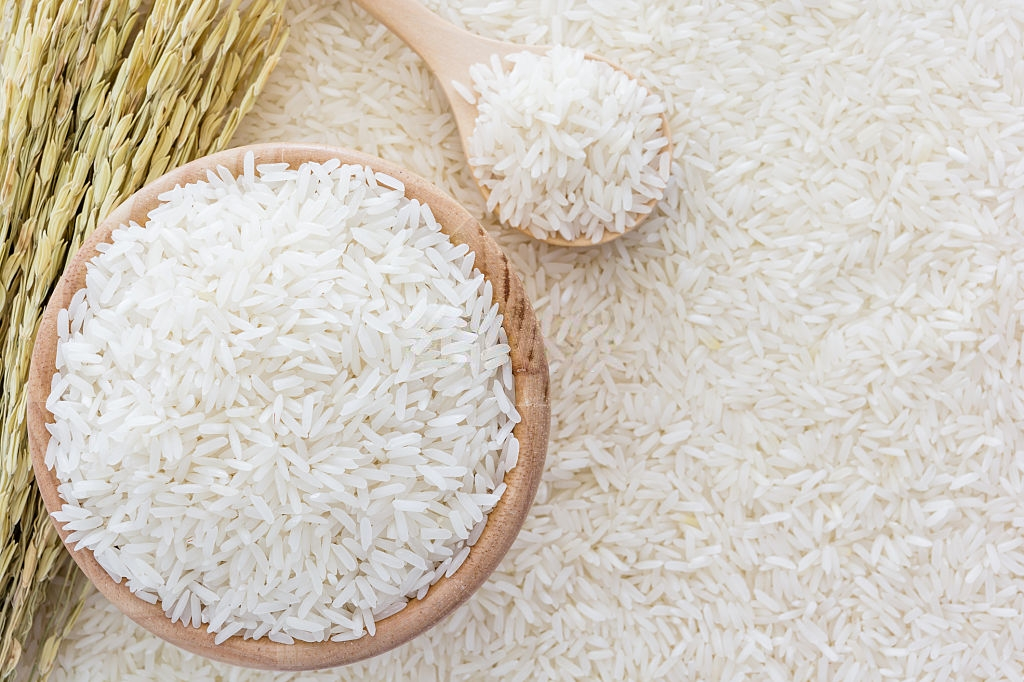When the world’s leading rice experts gathered in Phnom Penh for the 2025 TRT World Rice Conference, few could have predicted just how powerful the moment would be for Cambodia. Yet, as the results were announced, one name echoed with pride across the hall and throughout the nation — Malys Angkor.
Crowned World’s Best Rice 2025, this achievement wasn’t just another accolade. It marked Cambodia’s seventh global win, following previous victories in 2012, 2013, 2014, 2018, 2022, and 2024. More than an award, it was a symbol of how far the country had come — from modest rice paddies to commanding international recognition as a producer of the world’s finest fragrant rice.

This article explores the inspiring journey behind Malys Angkor — how Cambodia transformed a humble grain into a world-class brand, the role of farmers and institutions in its success, and how this golden grain continues to drive economic growth and national pride.
1. The Legacy of Cambodian Fragrant Rice
A Heritage Rooted in Purity and Pride
Rice is more than food in Cambodia — it’s a part of the nation’s soul. For centuries, Cambodian farmers have cultivated rice in the fertile plains surrounding the Tonle Sap Lake, nourished by seasonal floods that enrich the soil. Among hundreds of native varieties, fragrant jasmine rice stands out as a symbol of purity, flavor, and cultural pride.
The name “Malys Angkor” beautifully captures this spirit.
- “Malys” means jasmine in Khmer — symbolizing purity, aroma, and beauty.
- “Angkor” refers to the historic temple complex, representing Cambodia’s national pride and cultural identity.
Together, the name evokes both natural perfection and heritage — a reflection of the rice’s quality and the people behind it.
Why Cambodian Rice Stands Apart
Cambodia’s natural environment provides ideal conditions for producing premium rice. The combination of fertile alluvial soil, tropical climate, and abundant fresh water from the Mekong and Tonle Sap rivers creates the perfect ecosystem for fragrant, high-quality grains. Unlike industrial rice farming in other parts of Asia, many Cambodian farmers still rely on traditional cultivation methods — preserving the purity and aroma of the grain.
According to the Cambodia Rice Federation (CRF), over 80% of Cambodian farmers are engaged in rice cultivation, making it both an economic lifeline and a cultural tradition.
2. A Decade of Glory: Cambodia’s Winning Streak on the World Stage
Seven Wins and Counting
Since first claiming the title in 2012, Cambodia has steadily built a reputation as a world-class rice producer. The TRT World Rice Conference, organized annually by The Rice Trader (TRT), gathers global rice experts, traders, and food scientists to judge the world’s best varieties based on aroma, texture, taste, and appearance.
Cambodia’s record of success is unmatched for a developing rice-exporting nation:
| Year | Winning Variety | Host Country |
|---|---|---|
| 2012 | Phka Rumduol | Bali, Indonesia |
| 2013 | Phka Rumduol | Hong Kong |
| 2014 | Phka Rumduol | Phnom Penh, Cambodia |
| 2018 | Malys Angkor | Hanoi, Vietnam |
| 2022 | Phka Rumduol | Phuket, Thailand |
| 2024 | Malys Angkor | Manila, Philippines |
| 2025 | Malys Angkor | Phnom Penh, Cambodia |
Each victory has elevated the nation’s agricultural reputation, proving that Cambodia’s fragrant rice varieties can compete with — and surpass — those from Thailand, Vietnam, and India.
Global Validation of Local Excellence
Winning such an award doesn’t happen by chance. The rice samples are evaluated by international judges in blind taste tests. The criteria focus on sensory qualities such as fragrance, flavor, appearance, and mouthfeel — all areas where Cambodian rice, particularly Malys Angkor, excels.
The Ministry of Commerce hailed the 2025 victory as “a testament to the hard work and unity of Cambodian farmers and producers who uphold quality from field to export.”
3. What Makes Malys Angkor the Best?
Fragrance, Texture, and Taste: The Triple Crown of Quality
Malys Angkor’s fame stems from its balance of fragrance, softness, and sweetness. The grains are long and slender, exuding a natural jasmine aroma that intensifies when cooked. It’s this harmony that delights judges and consumers alike.
A 2025 sensory analysis by The Rice Trader described Malys Angkor as:
“Delicately fragrant, velvety in texture, and naturally sweet — a true embodiment of balance and purity.”
Fertile Lands and Traditional Farming
The secret also lies in where it’s grown. The provinces of Battambang, Prey Veng, Kampong Thom, and Takeo are among the main producers. Here, centuries-old farming wisdom meets modern techniques. Farmers carefully select seeds, nurture crops without excessive chemical use, and harvest at precise times to maintain grain consistency.
The result is a rice variety that reflects both tradition and innovation — blending ancient agricultural practices with modern processing technology.
Certified Authenticity: The “Angkor Malys” Label
To protect quality and authenticity, the Cambodia Rice Federation introduced a certification known as “Angkor Malys.” This mark ensures that only genuine Cambodian fragrant rice varieties meeting strict standards can carry the name. It also helps prevent imitation and boosts international consumer confidence.
4. The Heroes Behind the Grain: Farmers and Institutions
Empowering Farmers through Innovation
Behind every grain of Malys Angkor lies the dedication of thousands of farmers. They are the true custodians of quality — working tirelessly to meet global demand while preserving traditional values.
The Cambodia Rice Federation (CRF) has been instrumental in supporting them through:
- Seed improvement programs
- Farmer training workshops
- Access to new technologies and irrigation systems
- Export promotion and global market access
Through these initiatives, Cambodia has been able to increase yield and quality while maintaining sustainable practices.
The Ministry of Commerce and Policy Support
The Ministry of Commerce (MoC) plays a central role in promoting Cambodian rice abroad. Under its leadership, the government launched the 2025–2030 Rice Export Strategy, focusing on:
- Expanding premium rice exports to Europe and Asia
- Strengthening value chain logistics
- Encouraging sustainable farming and branding
By aligning agricultural production with trade policy, Cambodia is ensuring that Malys Angkor remains a symbol of both quality and economic resilience.
5. Cambodia’s Rice Export Boom
Numbers That Tell the Story
Cambodia’s growing recognition is reflected in its export statistics. According to the Cambodia Rice Federation, the country exported 596,341 tonnes of milled rice in the first nine months of 2025 — a 33.7% increase from 445,913 tonnes during the same period in 2024.
Revenue jumped to US$408 million, up 21% year-over-year. Fragrant rice varieties like Malys Angkor accounted for more than two-thirds of total exports.
Cambodia’s major export destinations include:
- European Union (France, Netherlands, Italy)
- China and Hong Kong
- ASEAN neighbors (Malaysia, Singapore, Philippines)
- Middle East markets (UAE, Saudi Arabia, Qatar)
A Shift Toward Premium Markets
Rather than competing on volume, Cambodia is positioning itself as a premium supplier. While countries like Thailand and Vietnam focus on bulk exports, Cambodia is targeting high-end consumers who value authenticity and quality.
This strategy aligns with the national vision: to transform Cambodia from a commodity exporter into a global brand for premium agricultural products.
6. Global Recognition and National Branding
A Grain That Tells a Nation’s Story
Malys Angkor isn’t just rice — it’s Cambodia’s ambassador to the world. Each award win generates positive media coverage, reinforcing Cambodia’s image as a producer of quality and authenticity.
In recent years, major publications like Phnom Penh Post, Khmer Times, and The Thaiger have highlighted how Cambodian rice’s global recognition is elevating the country’s reputation in international trade.
Food Diplomacy and Trade Impact
Through global awards and rising exports, Malys Angkor has become a key element of Cambodia’s soft power. It strengthens the country’s identity in international markets and attracts investment in agriculture, logistics, and food technology.
The Ministry of Commerce emphasizes that “exporting Malys Angkor means exporting Cambodia’s pride.” Each shipment that reaches Europe or Asia carries not just rice — but the story of a nation’s craftsmanship and resilience.
7. Challenges and the Road Ahead
Obstacles on the Path to Growth
Despite impressive achievements, Cambodia faces challenges in maintaining and expanding its rice success story:
- Infrastructure gaps: Limited drying and storage facilities affect quality during harvest seasons.
- Climate risks: Irregular rainfall and droughts pose long-term threats to production.
- Market competition: Thailand, Vietnam, and India continue to dominate global exports in both volume and branding.
- Value chain fragmentation: Smallholder farmers often face difficulties accessing financing and advanced technology.
Strategic Solutions for the Future
To sustain its momentum, the Cambodia Rice Federation and Ministry of Commerce are focusing on:
- Improving irrigation and technology access
- Expanding certification systems (Angkor Malys label)
- Developing digital traceability for export products
- Promoting organic and sustainable rice production
- Building global partnerships and e-commerce channels
Vision 2030: Cambodia as a Premium Rice Powerhouse
The Rice Export Strategy 2025–2030 outlines Cambodia’s long-term ambition — to reach 1 million tonnes of milled rice exports annually while maintaining premium quality standards. The goal is not only to grow export volumes but to brand Cambodian rice as a global symbol of quality.
As CRF President Song Saran noted:
“Our goal is to ensure that when people think of premium rice, they think of Cambodia — and when they think of Cambodia, they think of Malys Angkor.”
8. Beyond Awards: The Human and Economic Impact
Empowering Rural Communities
The success of Malys Angkor has transformed the lives of thousands of farmers across Cambodia. With higher demand for fragrant rice, many have seen improved incomes and better access to technology and education for their children.
In regions like Battambang, cooperatives now provide training, storage, and quality monitoring, ensuring that local farmers meet international standards while retaining control of their crops.
Women in Rice Production
Women play a vital role in the rice value chain — from seed selection and planting to marketing and export coordination. Several farmer-led initiatives now empower women through training and access to microfinance, contributing to greater gender equality in agriculture.
Boosting Cambodia’s Global Reputation
The international success of Malys Angkor strengthens Cambodia’s brand beyond agriculture. It demonstrates that the country can produce world-class products through skill, discipline, and pride — paving the way for other industries to follow.
9. Sustainability: Cultivating the Future Responsibly
From Traditional Wisdom to Modern Sustainability
Cambodia’s rice industry is increasingly turning toward eco-friendly farming methods. Techniques such as System of Rice Intensification (SRI) and organic fertilizer use are being promoted to reduce chemical dependency and preserve soil health.
The UNDP Cambodia and FAO have partnered with the government to introduce climate-resilient rice varieties, ensuring that Malys Angkor continues to thrive amid changing environmental conditions.
Green Branding and Global Demand
Consumers around the world are becoming more conscious of sustainability. Cambodia’s natural, pesticide-light farming methods give it a competitive edge. Positioning Malys Angkor as a sustainable luxury rice can open doors to eco-conscious markets in Europe, Japan, and North America.
Conclusion: Cambodia’s Golden Grain of Pride
From the fertile fields of Battambang to the grand stage of the World Rice Conference, Malys Angkor represents more than just a culinary achievement — it embodies Cambodia’s resilience, unity, and pride.
Each grain tells a story: of farmers who rise with the sun to tend their crops, of institutions that invest in innovation, and of a nation that believes in its potential. The triumph of Malys Angkor is proof that with vision and dedication, Cambodia can compete — and win — on the world stage.
As Cambodia looks toward 2030, the world will continue to savor the aroma of its success. And with every bowl of Malys Angkor served, a taste of Cambodia’s heritage — pure, fragrant, and full of heart — is shared with the world.
Call to Action
👉 Celebrate Cambodia’s success — share the story of Malys Angkor and support local farmers by choosing Cambodian fragrant rice. Learn more about the country’s agricultural achievements at OrkunSantepheap.com.
READ MORE: Cambodia’s Malys Angkor Crowned World’s Best Rice for the Seventh Time!

